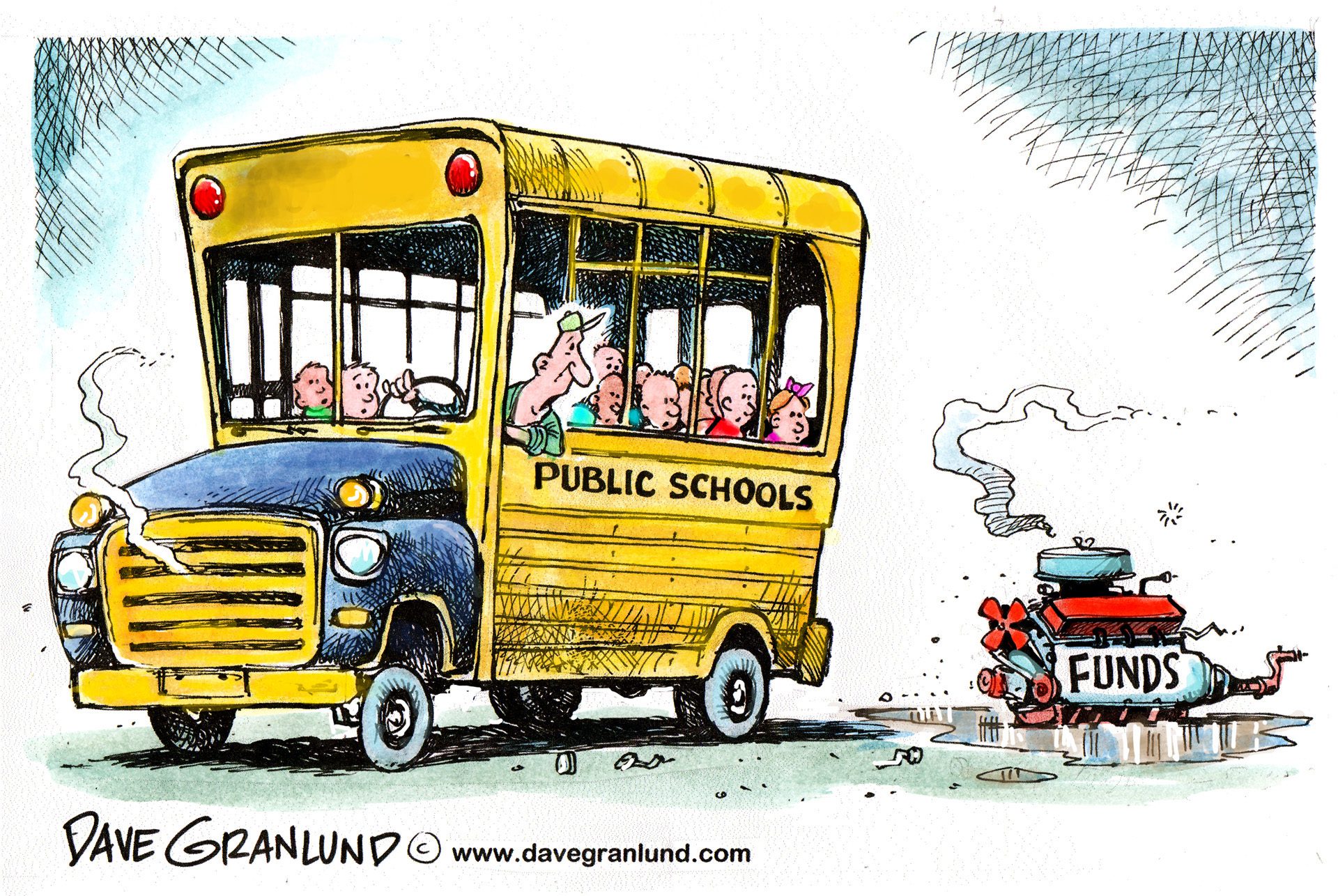BY DAVID PERRYMAN
 Traveling roads adjacent to railyards generally treats drivers to amazing artwork, albeit graffiti, on the sides of boxcars and other rolling stock. I have always thought that talent to produce those pieces could surely be put to better use. The fact that others share that sentiment was borne out by the words that I saw last week on a railcar: “Stay in Art Class.”
Traveling roads adjacent to railyards generally treats drivers to amazing artwork, albeit graffiti, on the sides of boxcars and other rolling stock. I have always thought that talent to produce those pieces could surely be put to better use. The fact that others share that sentiment was borne out by the words that I saw last week on a railcar: “Stay in Art Class.”
According to an article earlier this summer in Governing magazine, Oklahoma educators are facing “death by a thousand spending cuts.” Superintendents who have shepherded their districts through natural disasters and other catastrophic events have discovered that a lack of money to educate Oklahoma’s children is equally challenging.
When it comes to education funding, there is not a single state that has suffered more than ours over the past decade. The Governing article could have examined the situation in any state but found Oklahoma’s in the greatest crisis.
It is a shame, but Oklahoma spends $1 billion less on K-12 education than it did a decade ago. Twenty percent of our school districts are only teaching four days per week. The base minimum salary for educators hasn’t been raised in nine years and emergency certifications to fill teacher vacancies have gone from 32 five years ago to more than 1,400 this year.
Class sizes are growing as limitations on the student-teacher ratio have gone out the window. Many classes, including special education classes now exceed 30 to 33 students per teacher.
Likewise, class offerings are being eliminated. That includes such “superfluous” subjects as foreign languages, vocational agriculture, honors classes, advanced placement classes and art. Telling kids to stay in art class rings hollow when there is no art class to connect with the thousands of talented Oklahoma students whose future depends on that training. It doesn’t stop there.
Even funding this year for Oklahoma’s statewide science fair was cut.
Oklahomans who are fighting for the future of our state are facing dogmatic rhetoric from those groups who say that Oklahoma has a spending problem and not a revenue problem. Their “facts” are based on generalities like, “Oklahoma has too many school districts,” or “We need to spend less money on administrators and more in the classroom.”
The truth is, the number of Oklahoma school districts is not the problem and Oklahoma would see very little, if any, savings from school consolidation. For example, Oklahoma already has the fewest number of administrators per student in our seven-state region and that includes those states that are claimed to be more efficient because they have fewer school districts.
Oklahoma’s efficiencies are based on the fact that most rural administrators do double and triple duty. For instance, in the legislative district that I represent, all but two K-12 schools that have an average daily attendance of less than 550 students are already consolidated and those two already share superintendents with other small schools.
As a result, the per student expenditure in those schools averages 60% of the per student expenditure in metro schools. When you add in the low cost of K-8 schools [about 45% of the per student costs of metro schools], it becomes apparent that Gov. Mary Fallin was way off base last week when she renewed her call for K-8 school consolidation.
The efficiencies in Oklahoma schools are even more pronounced when consideration is given to the fact that the Oklahoma Legislature has dropped the ball by cutting funding to among the lowest in the nation. When Oklahoma’s percentage of administrative costs in relation to total funding is the lowest in the region and the total funding is lowest in the country and the region, it only takes a mathematical calculation to realize that administrative costs are already extraordinarily low.
To illustrate, the Oklahoma Policy Institute has determined that if Oklahoma were to cut its 3.2% rate of spending on district oversight to that of Hawaii’s, the lowest in the nation at .5%, it would have relatively little impact. Statewide, the savings would amount to $249 per student, or $165 million, a year. If all of the savings went to the classroom, Oklahoma would move up only one spot, to fourth from the last, in classroom spending per student.
The key is to properly fund education. Since 2008, the percentage change in the inflation adjusted state funding formula is nation leading minus 26.9%. Of the eight states that have cut general funding by 10% or more, five, including Oklahoma and Kansas, have enacted substantial income tax cuts. Reversing that damaging trend would greatly improve opportunities for our kids.
Until Oklahoma realizes the need to properly fund education, it may be that the most effective art class exercise would be a giant “Connect The Dots” worksheet.
– David Perryman, a Chickasha Democrat, represents District 56 in the Oklahoma House







